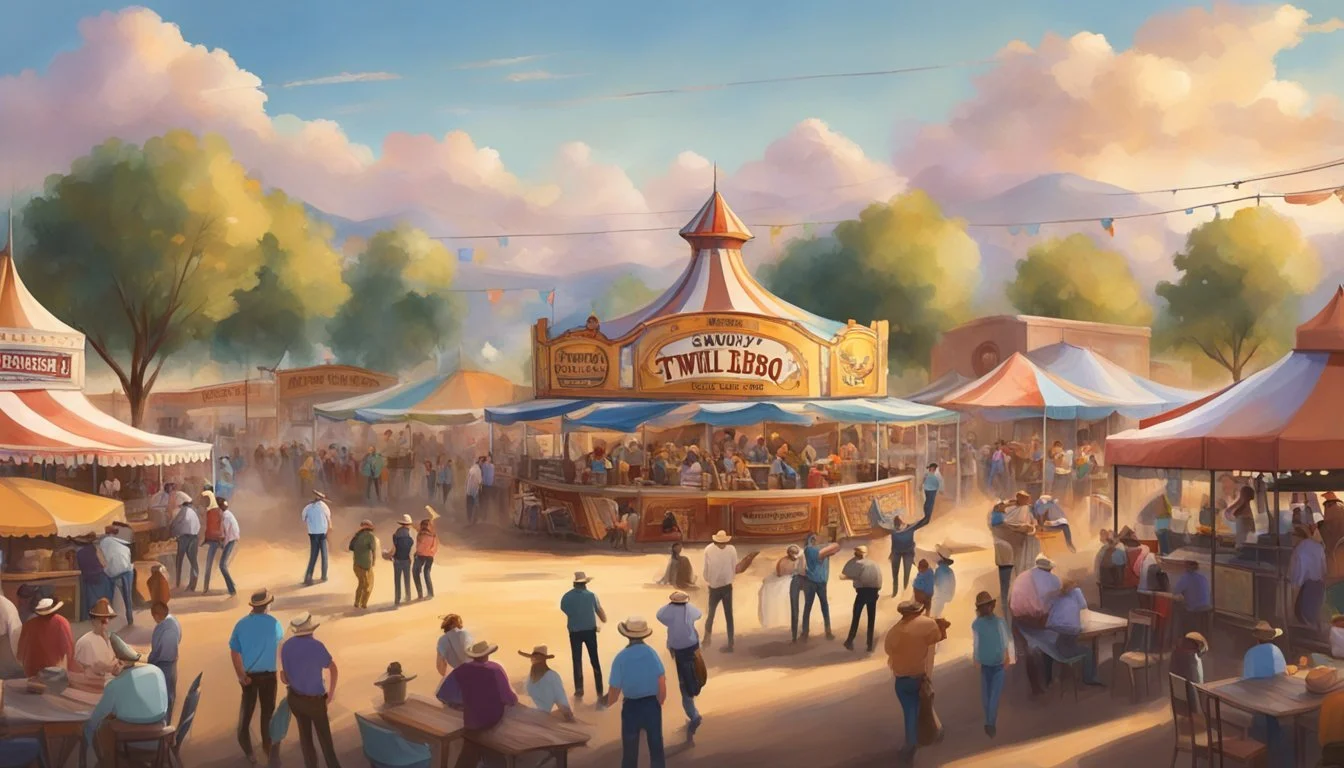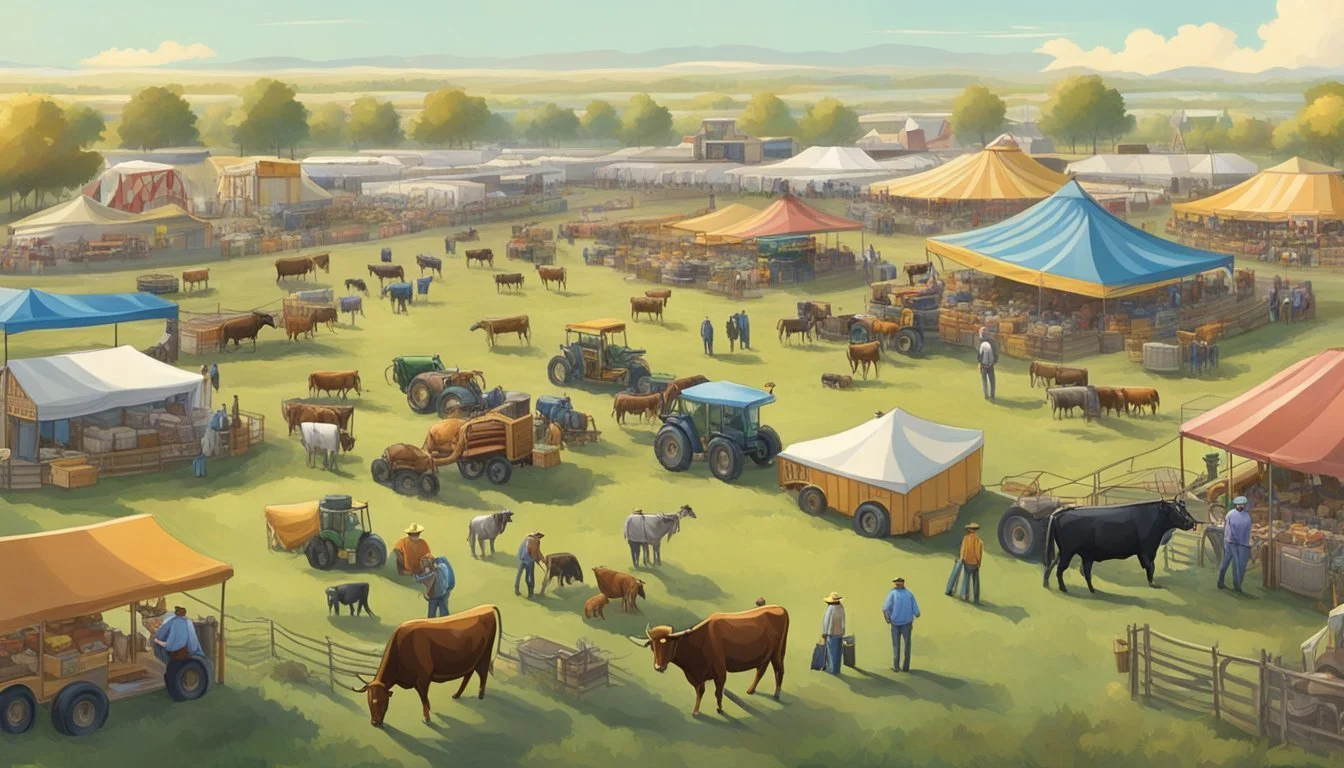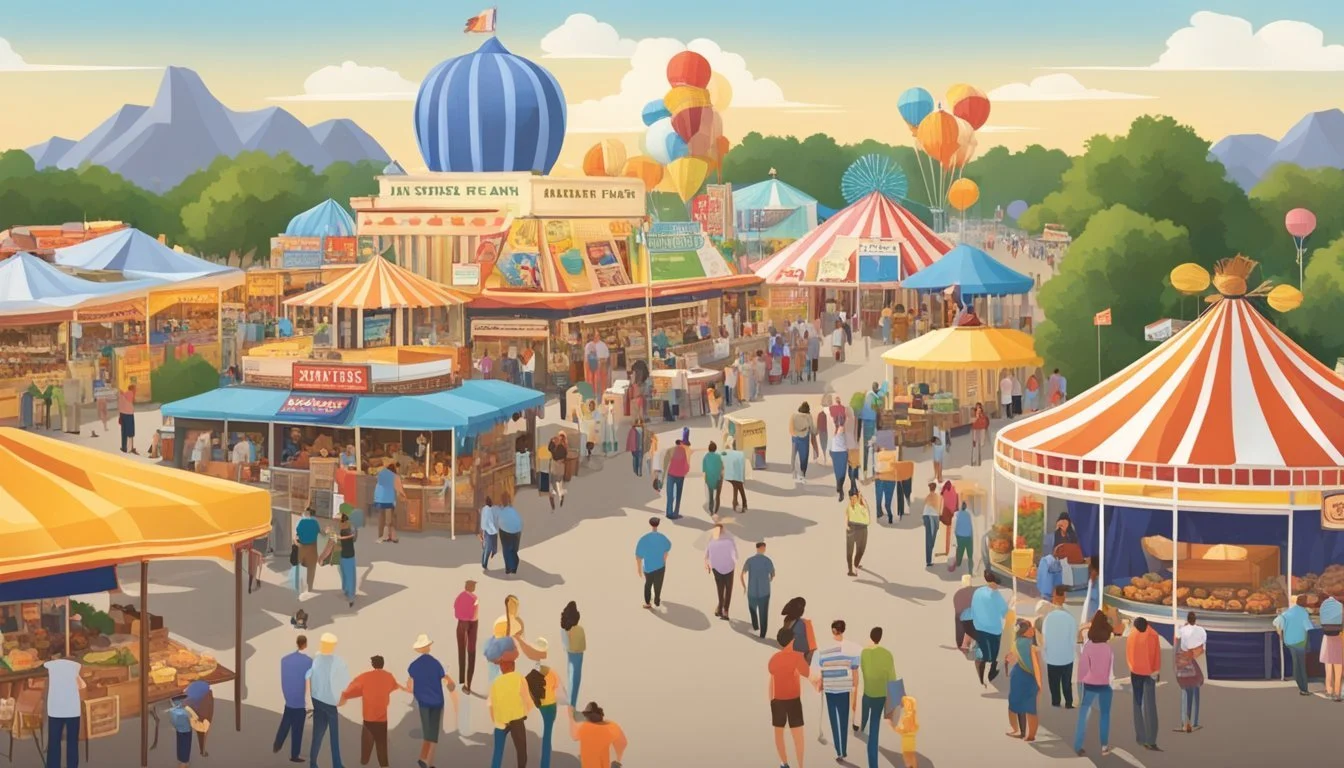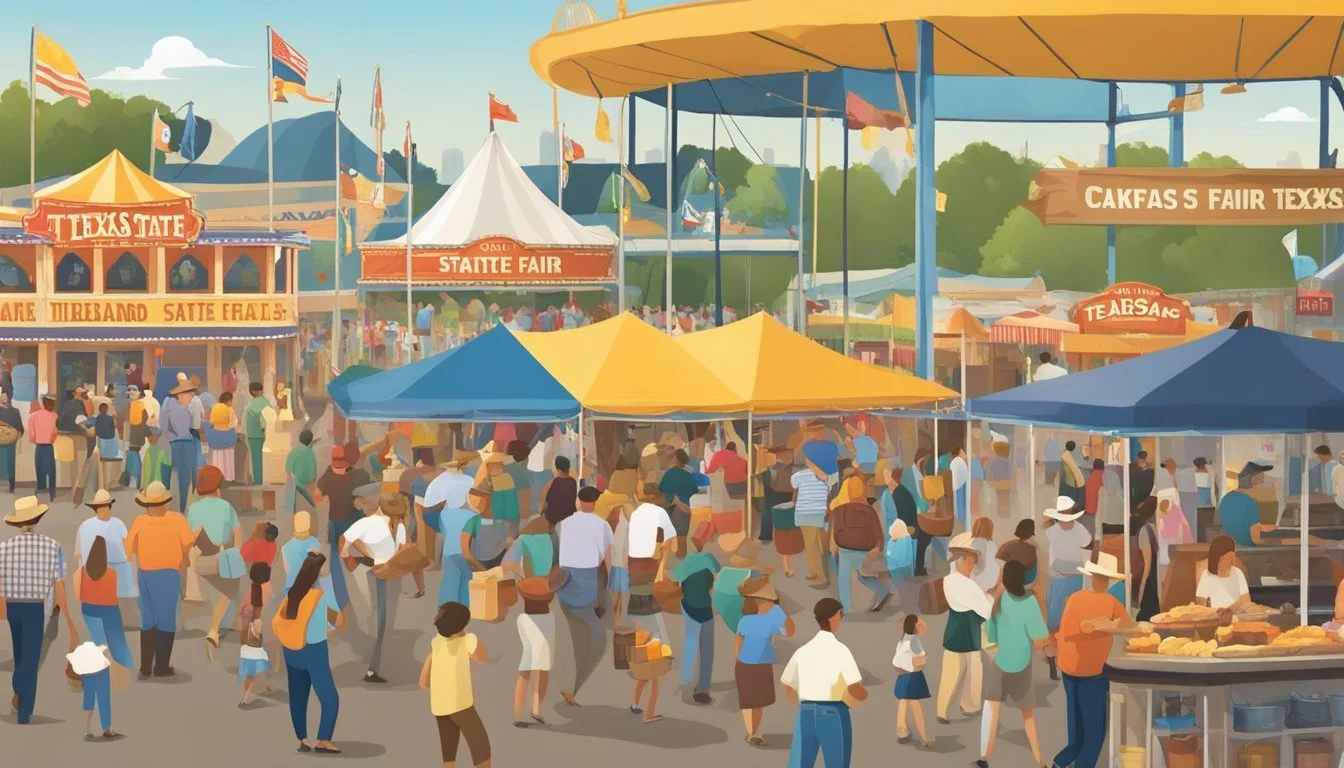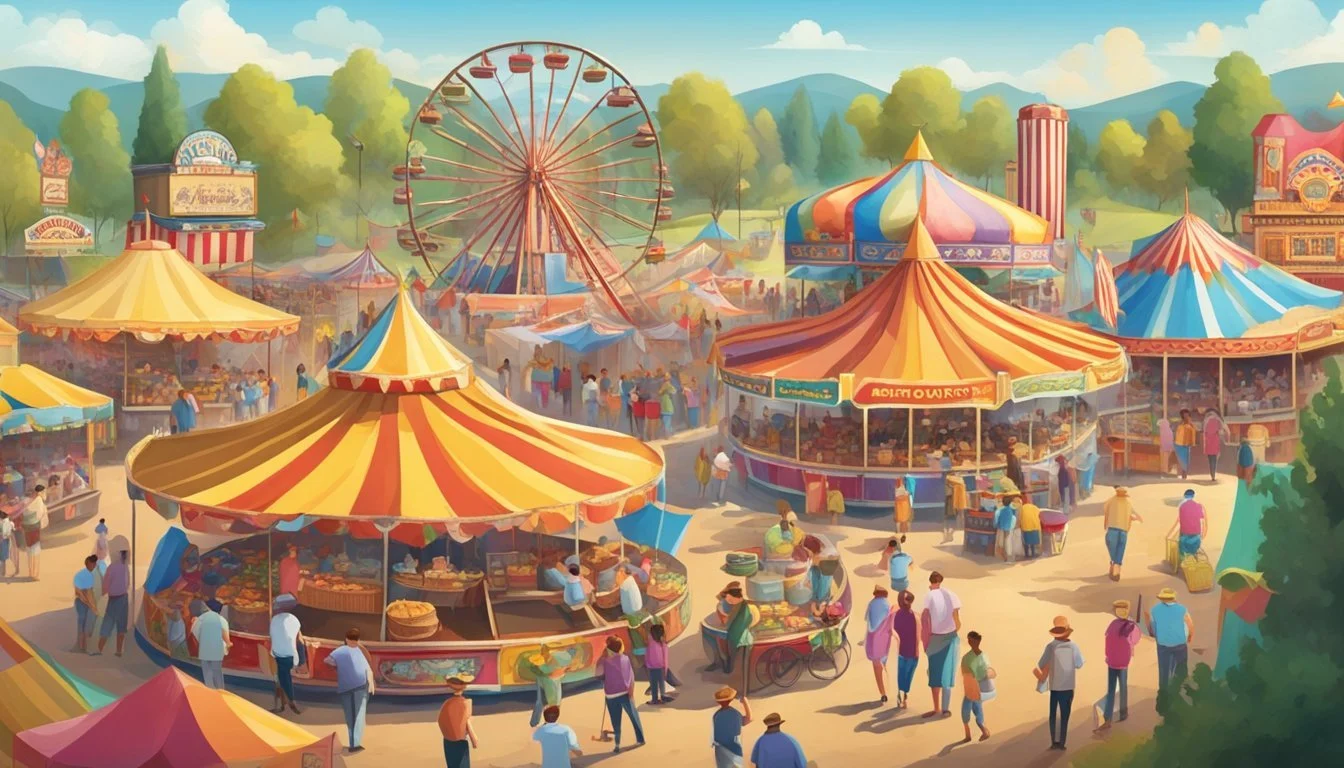The Texas State Fair
Embracing the Essence of Cowboy Traditions and Flavors
The Texas State Fair stands as a vibrant testament to the state's deep-rooted cowboy culture and its influence on local cuisine. Held annually at Fair Park in Dallas, the event is not just a fair but a cultural phenomenon that encapsulates the spirit of Texas, drawing in millions of visitors. The fairgrounds become a bustling showcase of traditions, where the essence of the cowboy way of life is celebrated through food, competitions, and community gatherings. The iconic symbol of the fair, Big Tex, towers over the festivities, embodying the Texas motto that indeed "everything is bigger in Texas."
One can't discuss the Texas State Fair without giving a nod to the culinary adventures it offers. The fair is notorious for its wide array of food that ranges from classic comfort dishes to new, inventive treats that push the boundaries of fair cuisine. Originating from the historic chuckwagon cooking of cattle drives, the modern fair selections stay true to their roots while embracing innovation. Visitors can savor flavors that are as diverse as the state itself, with dishes highlighting the fusion of cultures that have shaped Texan cuisine.
Throughout the fair's duration, the connection between Texas agriculture and cowboy culture is brought to the forefront, with both aspects being critical to the state's identity. The commitment to promoting agriculture is evident in the educational exhibits and livestock competitions. Meanwhile, the cowboy heritage permeates every aspect of the fair, from rodeo events to the music and dances, effectively bridging the past with the present. The Texas State Fair is not only an annual festivity but an immersive experience that honors the storied legacy and ongoing relevance of cowboy culture in Texas.
History and Significance
The Texas State Fair stands as a monumental event rich in tradition, dating back to the 19th century, and is a central stage where the iconic Big Tex greets visitors with the quintessence of Texan hospitality.
Origin of the State Fair of Texas
In Dallas, 1886, a cohort of businessmen—including W.H. Gaston, John S. Armstrong, and Thomas L. Marsalis—founded the Dallas State Fair & Exposition. This event would eventually become the State Fair of Texas, a cultural beacon embodying the Lone Star State's spirit. James B. Simpson took the helm as its first president, with the fair initially serving as a platform for showcasing agricultural and livestock advancements. Over time, it blossomed into a celebration of Texas heritage, entertainment, and culinary arts, becoming integral to Dallas's identity.
Evolution of Big Tex as an Icon
Big Tex, standing at a towering 55 feet, began as a Santa Claus figure before being transformed into the towering cowboy that has defined the State Fair of Texas since 1952. Crafted by Dallas artist Jack Bridges, this colossal statue epitomizes the phrase "everything is bigger in Texas" and has undergone several transformations, including after a fire in 2012. As the fair celebrated its sesquicentennial in recent years, Big Tex continued to serve as a beloved symbol. Former Dallas Mayor R.L. Thornton played a crucial role in elevating the fair—and with it, Big Tex—to national prominence, solidifying its status as an enduring icon of Texas culture.
Cultural Impact
The Texas State Fair is not only a festive gathering but a pivotal hub for perpetuating the storied traditions of Texas cowboys and their influence on communities both near and far.
Cowboy Culture and Rodeo Heritage
Texas cowboys have served as symbols of rugged individualism and cultural icons, their lives intertwined with the cattle drives and vast ranches that shaped much of Texas history. The State Fair encapsulates this cowboy culture by showcasing elements such as rodeo competitions, which celebrate the skills historically required for cattle ranching. Rodeos, a highlight of the fair, offer a glimpse into the competitive spirit and equestrian expertise that cowboys are renowned for.
Influence on Local and Global Communities
The State Fair of Texas has an expansive reach, influencing not just the local community but also cascading its cultural impact globally. The fair fosters a sharing of traditions, directly affecting local businesses through the promotion of cowboy-inspired art, crafts, and cuisine. Moreover, the fair's representation of the cowboy lifestyle has helped to shape global perceptions of Texas, weaving authentic aspects of the cowboy and rodeo heritage into the broader tapestry of American culture.
Community Impact:
Promotes economic growth through tourism
Amplifies local traditions and customs
Encourages the preservation of historical narratives
Keeping traditions alive, the fair serves as a beacon for cowboy culture, from the thrills of the rodeo to the nuances of Texan ranching life, resonating within and beyond the community.
Agriculture and Livestock Exhibits
The Texas State Fair is a vibrant showcase that promotes agricultural literacy through interactive exhibits and livestock displays, embodying Texas's rich ranching culture.
Showcasing Texas's Ranching Legacy
The fair honors Texas's ranching history by featuring historic cattle drive reenactments and herding demonstrations, bringing the past to life for fairgoers. These events highlight the skills and traditions integral to the open range, giving insights into the hard work of cowboys and ranchers. Guests may witness the dedication that goes into maintaining ranches and keeping Texas's ranching legacy alive.
Educational Exhibits and Competitions
The State Fair of Texas is committed to education by organizing competitions and exhibits that encourage youth participation in agriculture. Livestock competitions range from cattle to more exotic animals, judged by industry professionals. These events serve as a learning platform, where attendees:
Observe various livestock species and understand animal husbandry.
Learn from educational talks pinpointing care and management practices.
Engage with interactive displays focusing on agricultural technology advancements.
These sections strive to impart knowledge while ensuring fair visitors gain a hands-on understanding of the agricultural world.
Food and Cuisine
The Texas State Fair is a gastronomic playground, where fair food goes beyond expectations, and traditional Texas style dishes receive innovative twists. It's a place where the latest culinary creations make their debut alongside timeless classics.
Signature Dishes and Fair Food
Fairgoers can expect a wide variety of fair foods, including traditional favorites and new, inventive dishes. Signature dishes often include:
Corny dogs: A perennial favorite, deep-fried to golden perfection.
Funnel cakes: Sweet and crispy classics dusted with powdered sugar.
Beef dishes: Texas-style barbecue and grilled items reflecting the state's love for quality beef.
The fair is also renowned for its novelties, yearly surprises that often become instant hits. Here, creative vendors craft unique combinations, transforming typical ingredients into uncommon treats.
Impact of Food on Texas Culture
Fair food has had a considerable impact on Texas culture, especially during the event. It:
Serves as a culinary expression of the state's diverse heritage.
Reflects resilience, as vendors have consistently adapted, even during challenges like the pandemic.
The array of foods at the fair celebrates the state's innovative spirit and showcases the importance of cuisine as a cornerstone of cultural gatherings in Texas.
Fashion and Apparel
The Texas State Fair is not only a showcase of the state’s unique cuisine but also a vibrant exhibition of Texan cowboy fashion which plays a pivotal role in the celebration’s cultural expression.
The Cowboy Aesthetic
Cowboy fashion at the Texas State Fair is both an homage to the historical cowboy-like appearance and a display of modern Western style. Stetson hats and Lucchese boots are staples, reflecting the enduring image of the American cowboy. The Big Tex Boot Design Contest brings together local charm and design, offering a creative platform for new takes on the traditional cowboy boot. Dickies, a Texas-based brand, contributes to the fair's fashion by providing practical yet stylish options for fairgoers aiming to embody the cowboy aesthetic.
Functional Fashion: From Rodeo to Daily Wear
Functionality is key in cowboy apparel; hence, classics like 5-pocket jeans and durable shirts made from robust cloth are prevalent. These pieces are designed to withstand the rigors of rodeo challenges while offering comfort for daily wear. Elements such as rope belt loops or reinforced seams are not only practical but have become emblematic of the style. Moreover, the fashion showcased at the Texas State Fair encapsulates the tradition of blending workwear with casual garments, allowing for graceful transitions from a day of labor to social festivities.
Big Tex: The Evolution of a Mascot
As the symbol of the Texas State Fair, Big Tex has evolved from a roadside attraction to an iconic mascot representing Texan culture. His transformation and enduring presence underscore his significance to fairgoers and residents alike.
The Creation and Design of an Icon
Big Tex began his journey as a Santa Claus figure in the city of Kerens, Texas, to encourage holiday shopping in 1949. Standing at a towering 52 feet tall, the original design consisted of iron-pipe drill casing for the frame, which was then covered in cloth. The figure was purchased by the State Fair of Texas for $750 and was transformed into Big Tex, making his debut as the fair's official mascot in 1952. Big Tex's design is an exemplary representation of the classic cowboy, clad in denim and western attire, complete with a 75-gallon hat and size 70 boots. Radiating a welcoming demeanor, Big Tex has been equipped with a slow, friendly drawl to greet and interact with visitors.
The Tragic Fire and Rebirth of Big Tex
On October 19, 2012, a devastating fire caused by an electrical short resulted in Big Tex burning down to his skeletal frame. The incident occurred on the last weekend of the Fair, and images of the blaze quickly spread, marking a sorrowful day for Texas history. However, this tragedy sparked a swift rebirth, leading to the unveiling of a new and improved Big Tex the following year. Reinforced with advanced fire-retardant materials and an updated sound system to carry his voice, the reconstructed Big Tex now stands at a height of 55 feet. The fair's swift response to rebuild their beloved mascot showcases the resiliency and communal spirit synonymous with Texas culture and heritage.
Fair Park: Host of the Texas State Fair
Fair Park serves as the historic venue for the Texas State Fair, an event deeply embedded in the cultural fabric of Dallas, Texas. This 277-acre municipal park not only celebrates Texas's vibrant history but also its contemporary allure to visitors and residents alike.
The Historical and Cultural Venue of the Fair
Fair Park touts a legacy dating back to its inception in 1886 when it was established for the Dallas State Fair. Since then, it has evolved into a cornerstone of Texan pride, showcasing the region's achievements and traditions. A national historic landmark since 1986, the park encapsulates Texas's cultural diversity and historical progress.
Within its expansive boundaries, Fair Park houses an impressive array of architectural gems, museums, and performance venues. It welcomes Texans from all walks of life to come together in celebration. When the State Fair of Texas unfurls its colorful festivities, Fair Park transforms into a vibrant tableau of cowboy culture and revels in a gastronomic feast that ranges from traditional Texan barbecue to fried innovations that intrigue the palate.
The park's year-round programming ensures that the spirit of the State Fair extends beyond its seasonal run. It promotes educational initiatives and community development while continuously adding to Dallas's allure as a key destination for entertainment and learning in the Lone Star State.
Community and Economic Impact
The Texas State Fair annually contributes significantly to the local economy while fostering community engagement among attendees.
Contributions to the Local Economy
The State Fair of Texas has a substantial economic impact on Dallas, with estimates reaching upwards of $400 million annually. This infusion of funds is not limited to ticket sales alone; it extends to increased revenue for local stores and businesses that experience an uptick in customer traffic during the fair period. In fact, studies from the University of North Texas have quantified this positive financial influence, signaling a robust boost to the local economy.
Visitor Spending: A primary driver of economic contribution.
Operation Spending: Includes fair management expenditures that sustain fair operations.
It's not just the big headlines that underscore the fair’s economic role; it's the quieter ripple effects that reach the pockets of local vendors and entrepreneurs.
The Fair's Role in Community Building
Community building is intrinsic to the State Fair's mission. It serves as a cultural melting pot for Texans from all walks of life, converging for the shared fair experience. Programs like the Big Tex Urban Farms reflect the fair's commitment to community development, by providing sustainable urban agriculture and investing in Fair Park neighborhoods.
Kerens Chamber of Commerce and similar entities often experience heightened community engagement.
Cultural Exhibits and Educational Programs: Enrich the fair experience, fostering a sense of pride and togetherness.
The fair's social contributions weave a fabric of community unity and spirit that lasts well beyond the event itself.
Closing Remarks
The Texas State Fair stands as a testament to the state's rich cultural heritage, a place where cowboy culture and culinary innovation merge into a vibrant celebration. Visitors from all walks of life can witness the uniqueness of this event as they explore the fairgrounds.
Cowboy Culture: The fair's embodiment of cowboy traditions, showcased through live demonstrations, rodeos, and the towering icon of Big Tex, provides an immersive experience for those seeking a slice of Texas history and lifestyle.
Cuisine: Gastronomic adventurers indulge in an array of food traditions at the fair. The cuisine is characterized by both classic Texas fare and inventive culinary concoctions. They are offerings that push the boundaries of flavor and presentation, often leaving patrons in eager anticipation of next year's new flavors.
Educational and Entertaining:
Visitors learn about state agriculture through interactive exhibits.
Local artistry and craftsmanship are on full display, celebrating the creative spirit of Texans.
As the gates close on the latest season, the memories and experiences had at the Texas State Fair continue to resonate. They serve as a reminder of the fair's role in showcasing the essence of Texas spirit, and a symbol of the cultural pride that endures until the gates swing open once again to welcome a new season of celebration.
Prospects for the next fair are always bright, with each year promising to bring forth another chapter in the ever-evolving story of the Texas State Fair.

